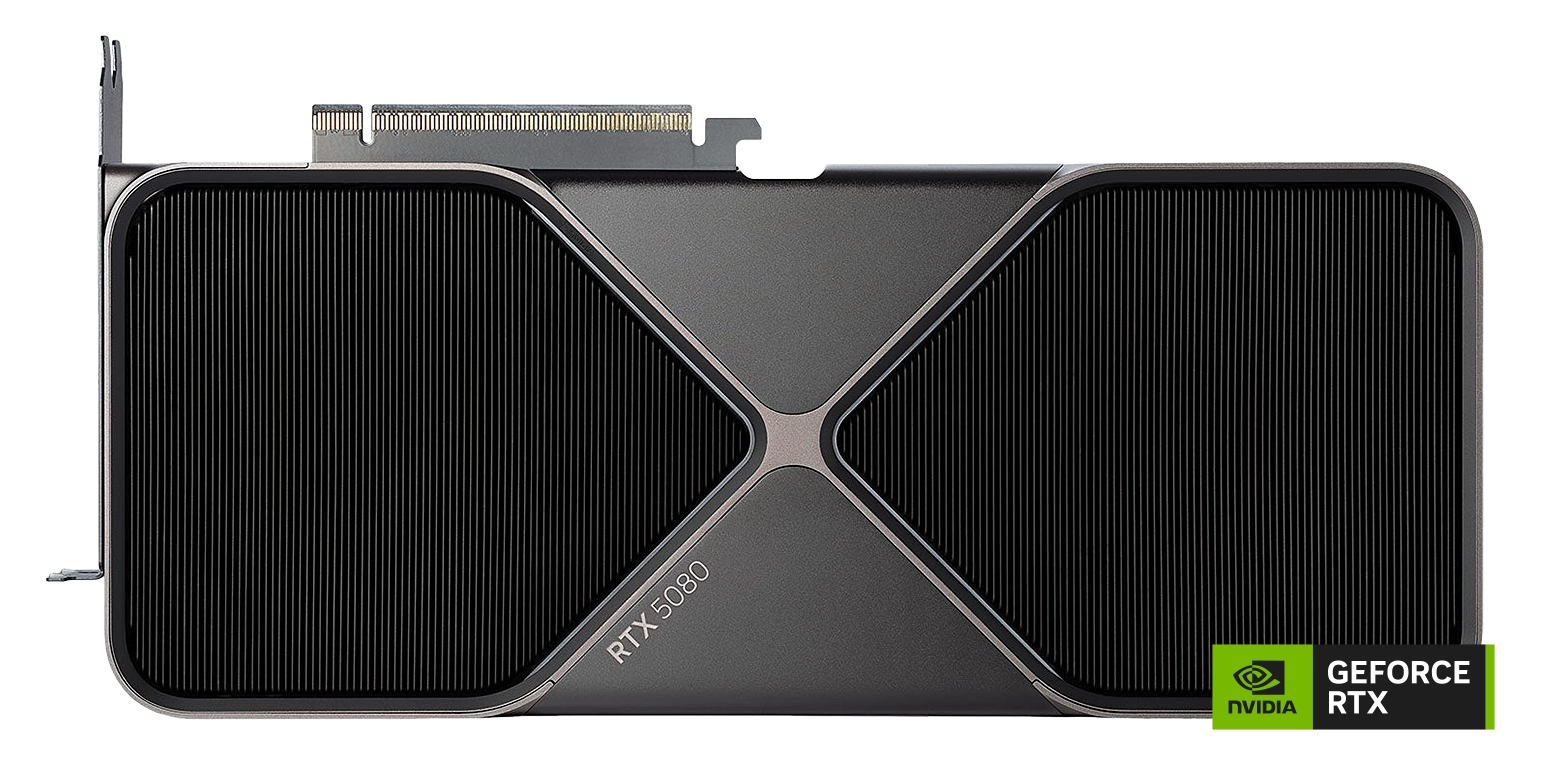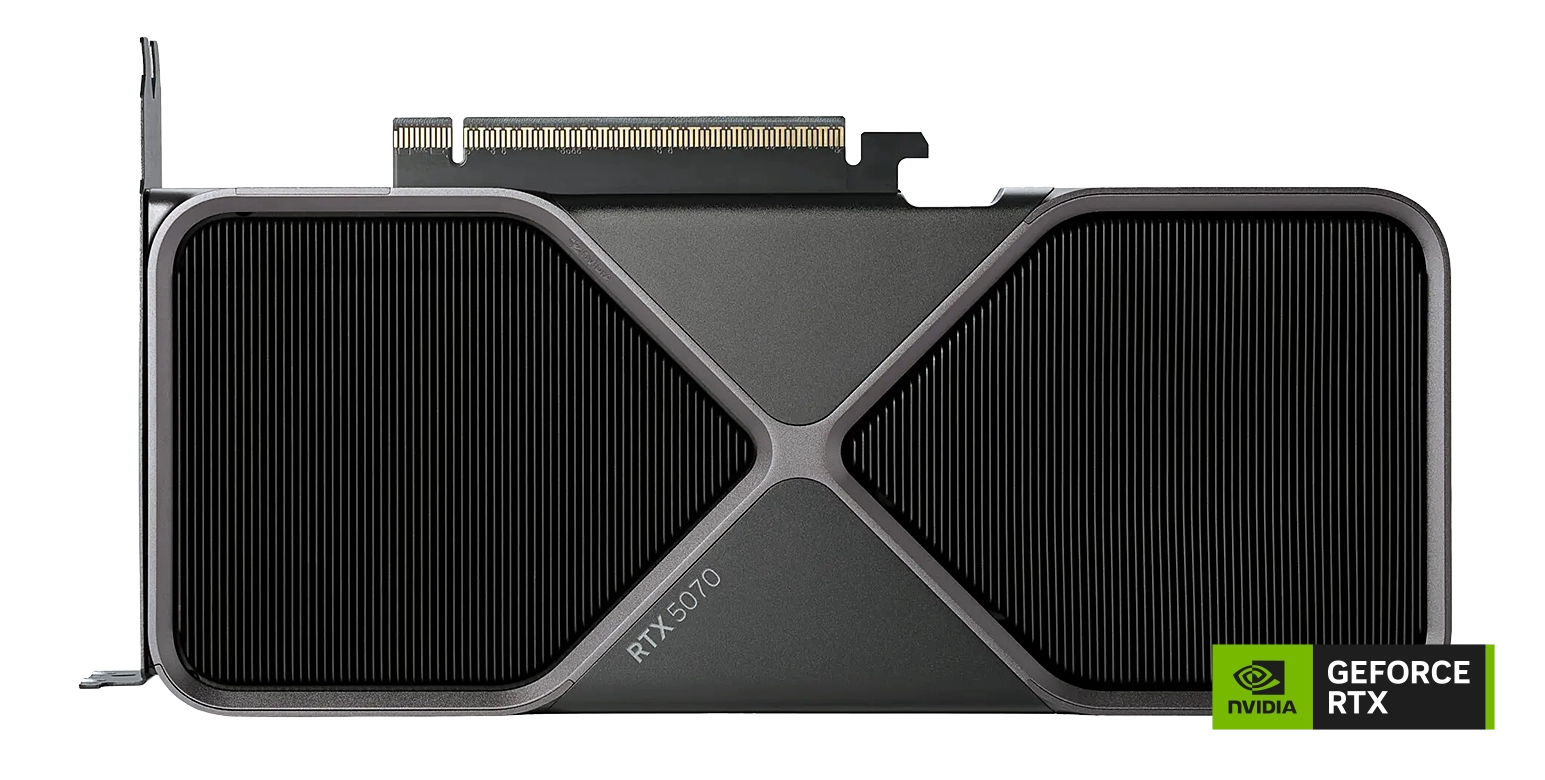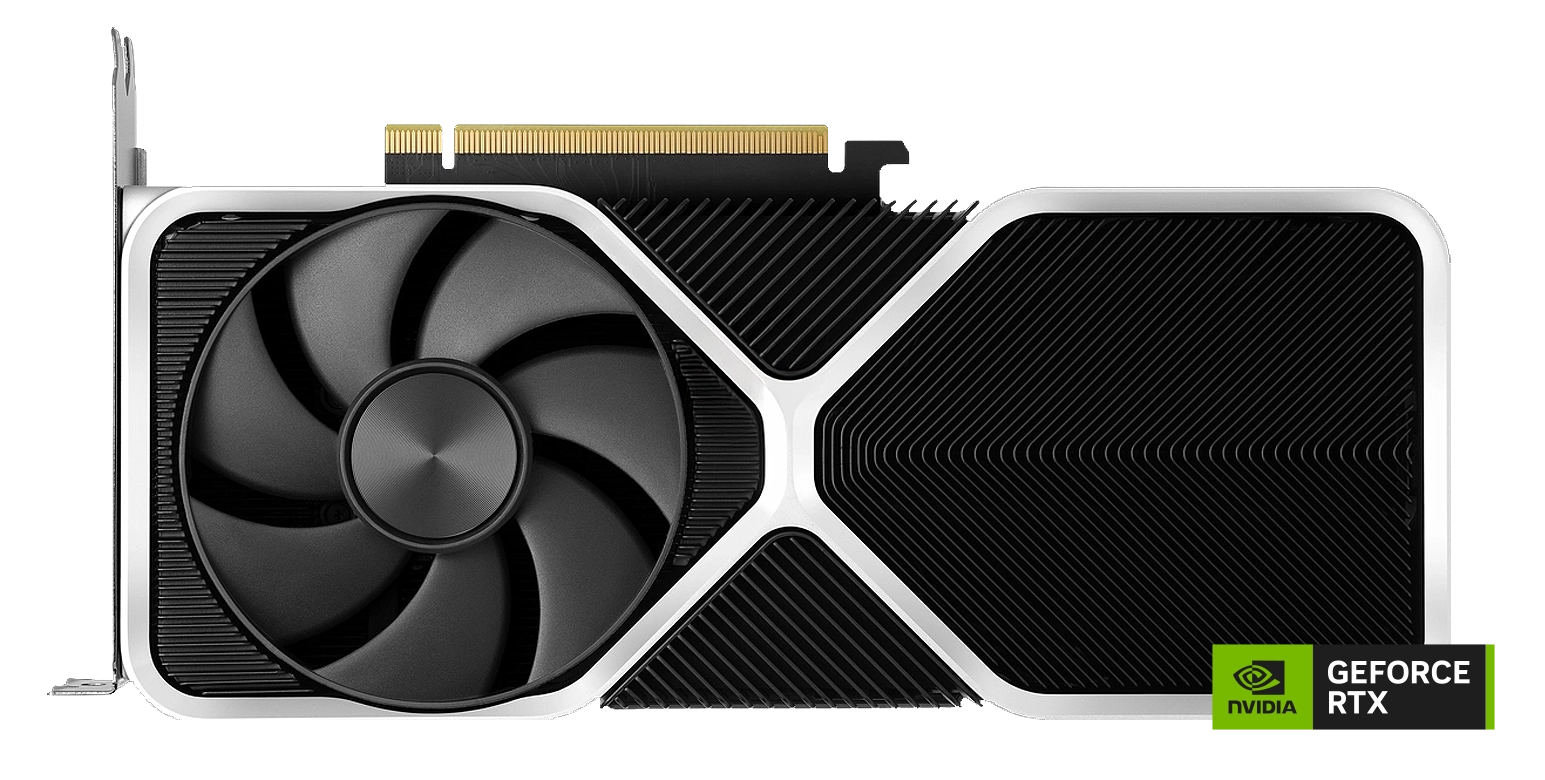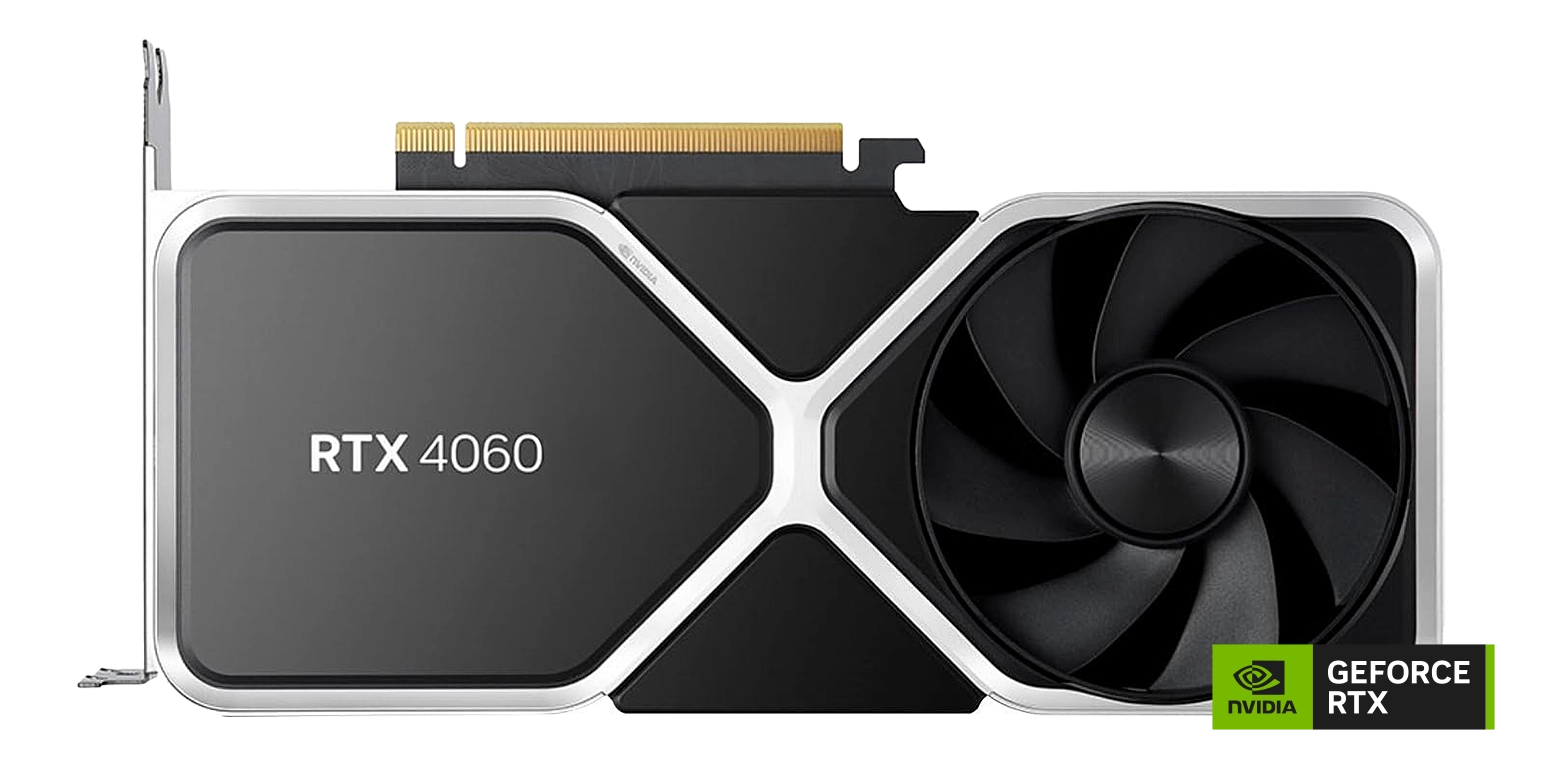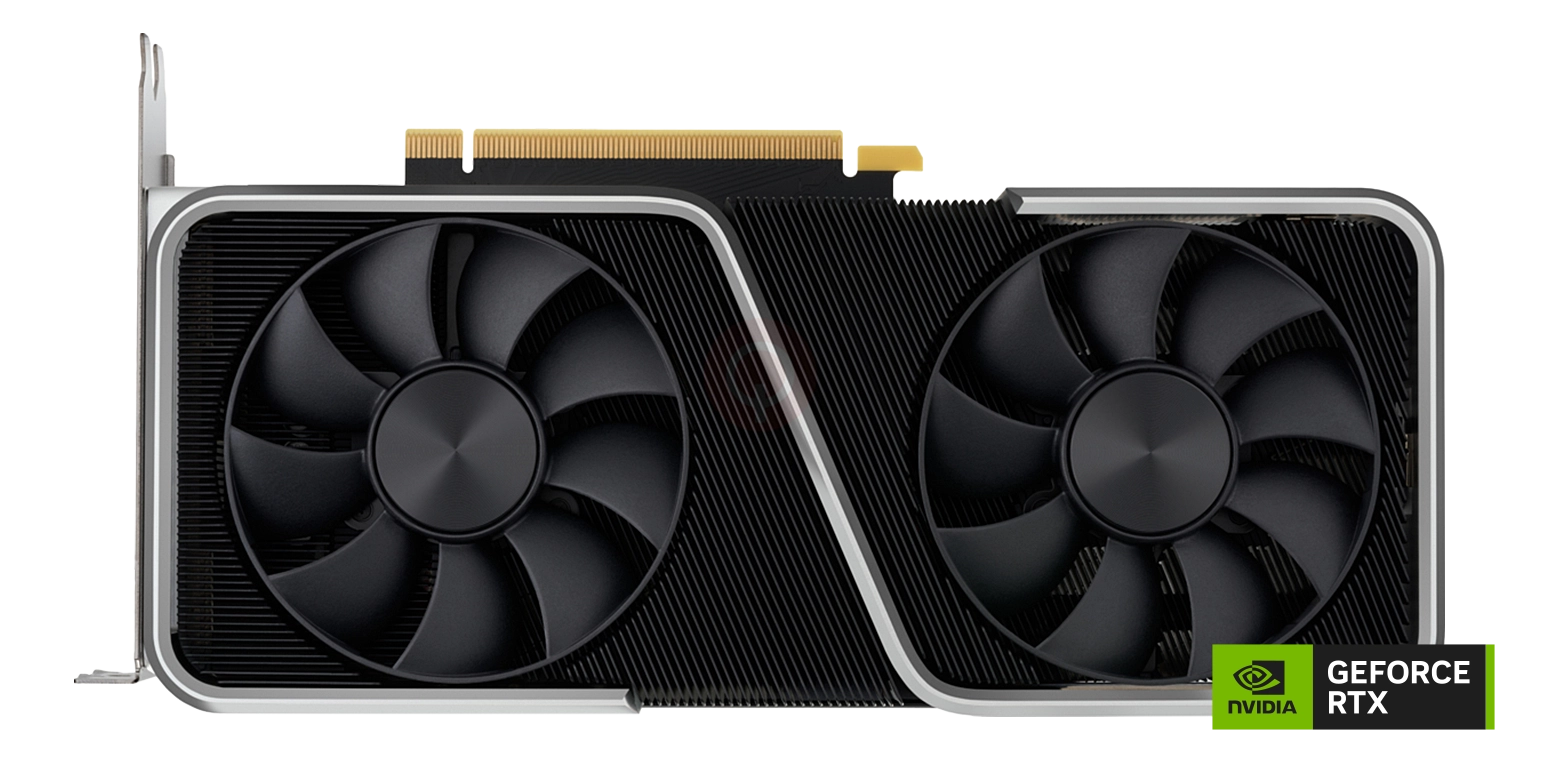NVIDIA Graphics Card Buyers Guide
Though many modern CPUs are equipped with integrated graphics, these are only really suitable for gaming at low quality settings at 1080p. Therefore, you should seriously consider buying a separate graphics card if you want to play GAMES or edit videos.
The GPU (Graphics Processing Unit) and is the main ingredient of a graphics card, the most important component in a gaming PC. The frontrunner in graphics cards is NVIDIA, and its range of GeForce GPUs offer something at every imaginable price point. The key specs to look out for when choosing a GeForce graphics card are the number of CUDA cores, RT cores, Tensor cores and amount of memory, with more powerful cards having more of all four.
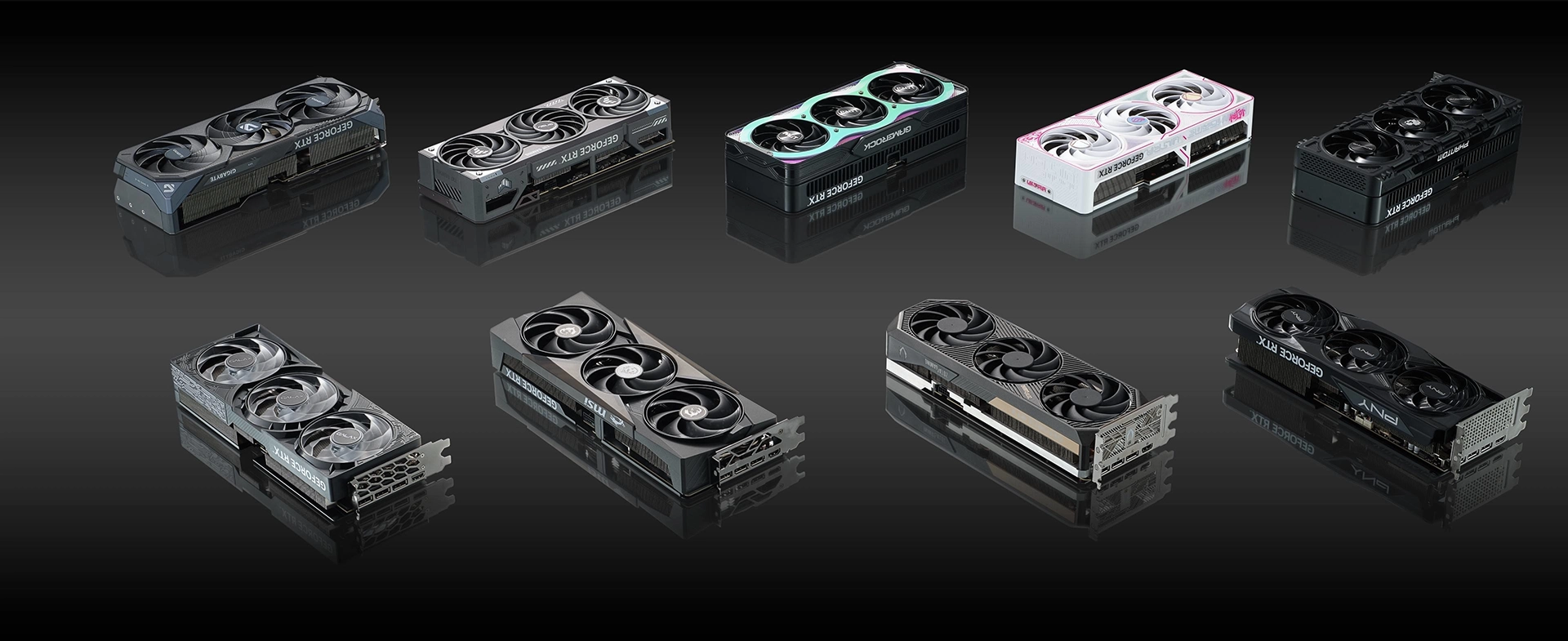
A more powerful graphics card will enable your PC to run games at higher quality settings at a smooth frame rate for a superior gaming experience. The first question you should therefore ask yourself is what monitor do you have or intend to buy so you can choose a graphics card suitable for it. To make this process easier this buyers guide recommends the optimum monitor resolution for each graphics card.

NVIDIA GeForce RTX Special Features
DLSS
DLSS (Deep Learning Super Sampling) is an advanced AI-powered rendering technique unique to NVIDIA graphics cards that uses the Tensor cores to increase frame rates. DLSS enables you ramp up the resolution to enjoy higher quality graphics, without sacrificing performance.
DLSS 1 & 2
DLSS 1 uses a technique called Super Resolution to upscale frames from a low resolution to a high resolution. DLSS 2 employs temporal anti-aliasing upsampling (TAUU) to improve image quality and performance and is supported in hundreds of games.
DLSS 3
DLSS 3 builds on these upscaling techniques but is even faster as it can create entirely new frames, interspersed between Super Resolution frames. This new Frame Generation technology uses the Tensor cores unique to NVIDIA RTX GPUs and can even boost the performance in CPU limited games such as flight simulators.
DLSS 4
DLSS 4 builds on these upscaling techniques and frame generation techniques but uses AI transformers rather than neural networks to produce three frames interspersed between Super Resolution frames. This new Multi Frame Generation technology uses the Tensor cores unique to NVIDIA RTX GPUs and can even boost the performance in CPU limited games such as flight simulators.
Ray Tracing
The RT cores enables real time ray traced graphics in games. Unlike traditional rasterised graphics, ray tracing simulates how light beams and shadows actually work, providing far more rich and realistic graphics.
NVIDIA Reflex
Reflex is a technology introduced with RTX 30-series GPUs that reduces input lag, the delay between you moving your mouse and seeing the game update on your monitor. 50-series GPUs add an improved version, Reflex 2, that cuts latency even further, helping you aim more accurately in fast-paced competitive games.
NVIDIA App
The NVIDIA App is the essential companion for PC gamers and creators. Keep your PC up to date with the latest NVIDIA drivers and technology. Optimize games and applications with a new unified GPU control center, capture your favorite moments with powerful recording tools through the in-game overlay, and discover the latest NVIDIA tools and software.
NVIDIA Broadcast
Broadcast is a software suite that helps streamers take their channel to the next level with tools such as background noise removal, virtual backgrounds and an auto frame function that zooms in on you and uses AI to track your head movements, keeping you at the centre of the action even as you shift from side to side. With these great features, NVIDIA Broadcast is like having your own professional studio and cameraperson.
The NVIDIA GeForce Hierarchy
RTX 5090
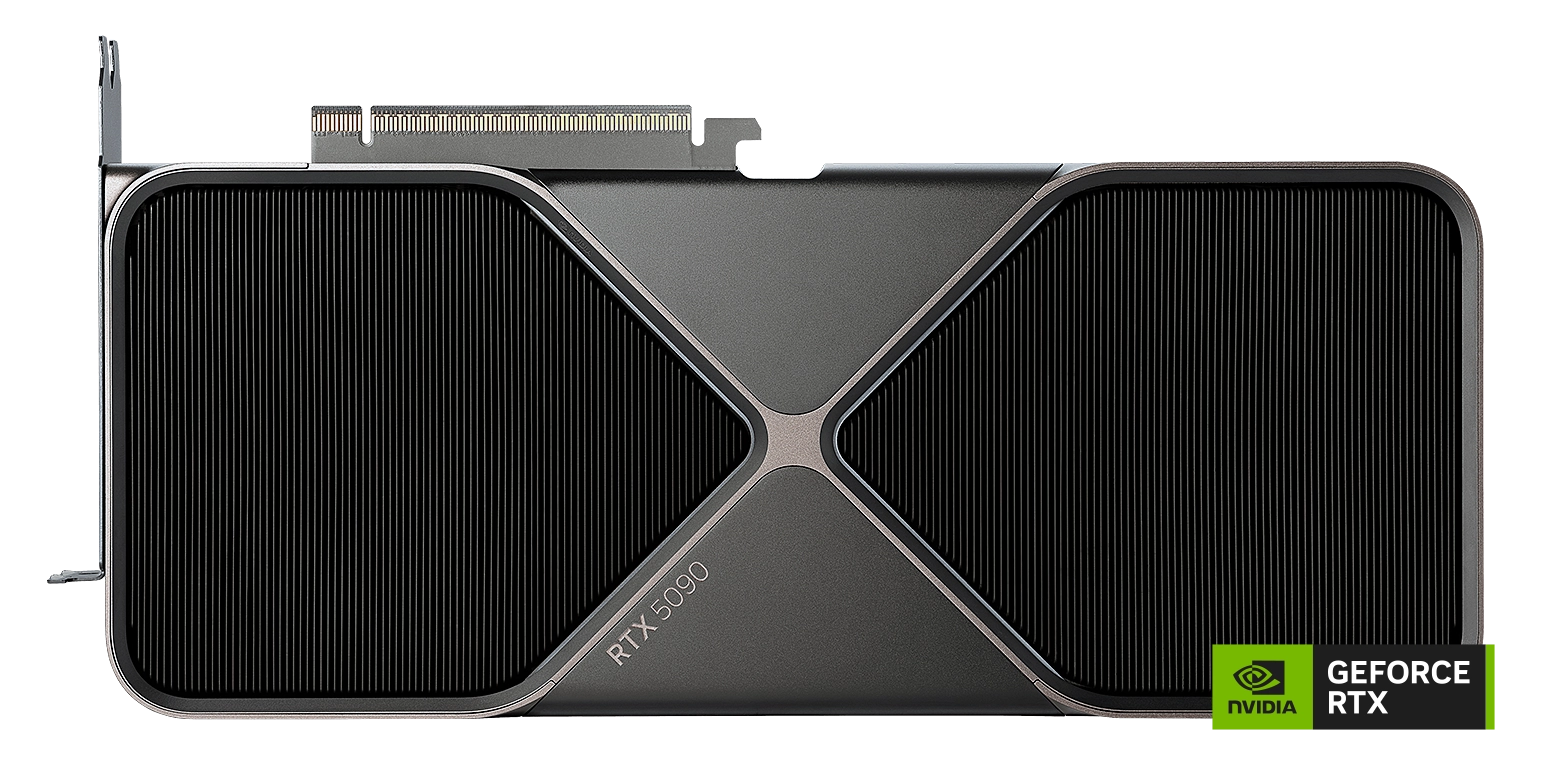
8K/4K/UW-QHD
Optimum Resolution
106
Shader Performance (TFLOPS)
318
Ray Tracing Performance (TFLOPS)
3,352
AI Performance (TOPS)
✔
VR Ready
The GeForce RTX 5090 is the flagship GeForce 50-series gaming graphics card. This ultra-fast graphics card packs in 21,760 CUDA cores, 170 4th gen RT cores, 680 5th gen Tensor cores and 32GB of GDDR7 memory, providing stunning gaming experiences at the most demanding resolutions, 8K, 4K and UW-QHD.
BLACKWELL
50-series GPUs are based on the Blackwell architecture which runs games up to twice as fast than previous 40-series Ada Lovelace GPUs.
RTX RAY TRACING
Fourth generation RT cores deliver up to double the real-time ray-tracing performance of the previous generation GPUs.
DLSS 4
Fifth generation Tensor cores use AI transformers to produce three frames interspersed between Super Resolution frames.
STREAMING
50-series GPUs ninth generation video encoders support the 4:2:2 pro-grade colour format - enabling new possibilities for content creators.
NVIDIA GPU Summary
Still not sure which NVIDIA graphics card is right for you? This table shows the key characteristics of the main models.
GeForce RTX 50-Series, 40-Series, 30-Series, 20-Series, GTX 16-Series & 10-Series Card Specifications
| Model | RTX 5090 | RTX 5080 | RTX 5070 Ti | RTX 5070 | RTX 5060 Ti | RTX 5060 | RTX 5050 | RTX 4090 | RTX 4080 Super | RTX 4080 | RTX 4070 Ti Super | RTX 4070 Ti | RTX 4070 Super | RTX 4070 | RTX 4060 Ti | RTX 4060 | RTX 3090 Ti | RTX 3090 | RTX 3080 Ti | RTX 3080 | RTX 3070 Ti | RTX 3070 | RTX 3060 Ti | RTX 3060 | RTX 3050 | RTX 3050 | TITAN RTX | RTX 2080 Ti | RTX 2080 Super | RTX 2080 | RTX 2070 Super | RTX 2070 | RTX 2060 Super | RTX 2060 | GTX 1080 Ti | GTX 1080 | GTX 1070 Ti | GTX 1070 | GTX 1660 Ti | GTX 1660 Super | GTX 1660 | GTX 1650 Super | GTX 1650 | GTX 1060 6GB | GTX 1060 3GB | GTX 1050 Ti | GTX 1050 |
|---|---|---|---|---|---|---|---|---|---|---|---|---|---|---|---|---|---|---|---|---|---|---|---|---|---|---|---|---|---|---|---|---|---|---|---|---|---|---|---|---|---|---|---|---|---|---|---|
| Architecture | Blackwell | Blackwell | Blackwell | Blackwell | Blackwell | Blackwell | Blackwell | Ada Lovelace | Ada Lovelace | Ada Lovelace | Ada Lovelace | Ada Lovelace | Ada Lovelace | Ada Lovelace | Ada Lovelace | Ada Lovelace | Ampere | Ampere | Ampere | Ampere | Ampere | Ampere | Ampere | Ampere | Ampere | Ampere | Turing | Turing | Turing | Turing | Turing | Turing | Turing | Turing | Pascal | Pascal | Pascal | Pascal | Turing | Turing | Turing | Turing | Turing | Pascal | Pascal | Pascal | Pascal |
| GPU | GB202 | GB203 | GB203 | GB205 | GB206 | GB206 | GB207 | AD102 | AD103 | AD103 | AD103 | AD104 | AD104 | AD104 | AD106 | AD107 | GA102 | GA102 | GA102 | GA102 | GA104 | GA104 | GA104 | GA106 | GA106 | GA106 | TU102 | TU102 | TU104 | TU104 | TU104 | TU106 | TU106 | TU106 | GP102 | GP104 | GP104 | GP104 | TU116 | TU116 | TU116 | TU117 | TU117 | GP106 | GP106 | GP107 | GP107 |
| CUDA Cores | 21,760 | 10,752 | 8,960 | 6,144 | 4,608 | 3,840 | 2,560 | 16,384 | 10,240 | 9,728 | 8,448 | 7,680 | 7,168 | 5,888 | 4,352 | 3,072 | 10,752 | 10,496 | 10,240 | 8,704 | 6,144 | 5,888 | 4,864 | 3,584 | 2,560 | 2,304 | 4,608 | 4,352 | 3,072 | 2,944 | 2,560 | 2,304 | 2,176 | 1,920 | 3,584 | 2,560 | 2,432 | 1,920 | 1,536 | 1,408 | 1,408 | 1,280 | 896 | 1,280 | 1,152 | 768 | 640 |
| Tensor Cores | 680 (5th Gen) | 336 (5th Gen) | 280 (5th Gen) | 192 (5th Gen) | 144 (5th Gen) | 120 (5th Gen) | 80 (5th Gen) | 512 (4th Gen) | 320 (4th Gen) | 304 (4th Gen) | 264 (4th Gen) | 240 (4th Gen) | 224 (4th Gen) | 184 (4th Gen) | 136 (4th Gen) | 96 (4th Gen) | 336 (3rd Gen) | 328 (3rd Gen) | 320 (3rd Gen) | 272 (3rd Gen) | 192 (3rd Gen) | 184 (3rd Gen) | 152 (3rd Gen) | 112 (3rd Gen) | 80 (3rd Gen) | 72 (3rd Gen) | 576 (2nd Gen) | 544 (2nd Gen) | 384 (2nd Gen) | 368 (2nd Gen) | 320 (2nd Gen) | 288 (2nd Gen) | 272 (2nd Gen) | 240 (2nd Gen) | 0 | 0 | 0 | 0 | 0 | 0 | 0 | 0 | 0 | 0 | 0 | 0 | 0 |
| RT Cores | 170 (4th Gen) | 84 (4th Gen) | 70 (4th Gen) | 48 (4th Gen) | 36 (4th Gen) | 30 (4th Gen) | 20 (4th Gen) | 128 (3rd Gen) | 80 (3rd Gen) | 76 (3rd Gen) | 66 (3rd Gen) | 60 (3rd Gen) | 56 (3rd Gen) | 46 (3rd Gen) | 34 (3rd Gen) | 24 (3rd Gen) | 84 (2nd Gen) | 82 (2nd Gen) | 80 (2nd Gen) | 68 (2nd Gen) | 48 (2nd Gen) | 46 (2nd Gen) | 38 (2nd Gen) | 28 (2nd Gen) | 20 (2nd Gen) | 18 (2nd Gen) | 68 (1st Gen) | 48 (1st Gen) | 46 (1st Gen) | 40 (1st Gen) | 36 (1st Gen) | 34 (1st Gen) | 30 (1st Gen) | 30 (1st Gen) | 0 | 0 | 0 | 0 | 0 | 0 | 0 | 0 | 0 | 0 | 0 | 0 | 0 |
| Reference Base Clock | 2.01GHz | 2.3GHz | 2.3GHz | 2.16GHz | 2.4GHz | 2.28GHz | 2.31GHz | 2.01GHz | 2.21GHz | 2.21GHz | 2.34GHz | 2.31GHz | 1.98GHz | 1.92GHz | 2.31GHz | 1.83GHz | 1,560MHz | 1,400MHz | 1,370MHz | 1,440MHz | 1,580MHz | 1,500MHz | 1,410MHz | 1,320MHz | 1,552MHz | 1,042MHz | 1,350 MHz | 1,350 MHz | 1,650 MHz | 1,515 MHz | 1,605 MHz | 1,410 MHz | 1,470 MHz | 1,365 MHz | 1,480 MHz | 1,607 MHz | 1,607 MHz | 1,506 MHz | 1,500 MHz | 1,530 MHz | 1,530 MHz | 1,530 MHz | 1,485 MHz | 1,506 MHz | 1,506 MHz | 1,290 MHz | 1,354 MHz |
| Reference Boost Clock | 2.41GHz | 2.62GHz | 2.45GHz | 2.51GHz | 2.6GHz | 2.49GHz | 2.57GHz | 2.52GHz | 2.55GHz | 2.51GHz | 2.61GHz | 2.61GHz | 2.48GHz | 2.48GHz | 2.54GHz | 2.46GHz | 1,860MHz | 1,700 MHz | 1,670MHz | 1,710 MHz | 1,770MHz | 1,730 MHz | 1,665MHz | 1,780MHz | 1,777MHz | 1,470MHz | 1,770 MHz | 1,545 MHz | 1,815 MHz | 1,710 MHz | 1,770 MHz | 1,710 MHz | 1,650 MHz | 1,680 MHz | 1,582 MHz | 1,733 MHz | 1,683 MHz | 1,683 MHz | 1,770 MHz | 1,785 MHz | 1,785 MHz | 1,725 MHz | 1,665 MHz | 1,708 MHz | 1,708 MHz | 1,392 MHz | 1,455 MHz |
| Memory | 32GB GDDR7 | 16GB GDDR7 | 16GB GDDR7 | 12GB GDDR7 | 8/16GB GDDR7 | 8GB GDDR7 | 8GB GDDR6 | 24GB GDDR6X | 16GB GDDR6X | 16GB GDDR6X | 16GB GDDR6X | 12GB GDDR6X | 12GB GDDR6X | 12GB GDDR6X | 8/16GB GDDR6 | 8GB GDDR6 | 24GB GDDR6X | 24GB GDDR6X | 12GB GDDR6X | 10GB GDDR6X | 8GB GDDR6X | 8GB GDDR6 | 8GB GDDR6 | 12GB GDDR6 | 8GB GDDR6 | 6GB GDDR6 | 24GB GDDR6 | 11GB GDDR6 | 8GB GDDR6 | 8GB GDDR6 | 8GB GDDR6 | 8GB GDDR6 | 8GB GDDR6 | 6GB GDDR6 | 11GB GDDR5X | 8GB GDDR5X | 8GB GDDR5 | 8GB GDDR5 | 6GB GDDR6 | 6GB GDDR6 | 6GB GDDR5 | 4GB GDDR6 | 4GB GDDR5 | 6GB GDDR5 | 3GB GDDR5 | 4GB GDDR5 | 2GB GDDR5 |
| Memory Controller | 512-bit | 256-bit | 256-bit | 192-bit | 128-bit | 128-bit | 128-bit | 384-bit | 256-bit | 256-bit | 256-bit | 192-bit | 192-bit | 192-bit | 128-bit | 128-bit | 384-bit | 384-bit | 384-bit | 320-bit | 256-bit | 256-bit | 256-bit | 192-bit | 128-bit | 96-bit | 384-bit | 352-bit | 352-bit | 256-bit | 256-bit | 256-bit | 256-bit | 192-bit | 352-bit | 256-bit | 256-bit | 256-bit | 192-bit | 192-bit | 192-bit | 128-bit | 128-bit | 192-bit | 192-bit | 128-bit | 128-bit |
| TDP | 575W | 360W | 300W | 250W | 180W | 145W | 130W | 450W | 320W | 320W | 285W | 285W | 220W | 200W | 160W | 115W | 350W | 350W | 350W | 320W | 290W | 220W | 200W | 170W | 130W | 70W | 280W | 260W | 250W | 225W | 215W | 175W | 175W | 160W | 250W | 180W | 180W | 150W | 120W | 125W | 120W | 110W | 75W | 120W | 120W | 75W | 75W |
| Minimum PSU | 1000W | 850W | 750W | 650W | 600W | 550W | 550W | 850W | 750W | 750W | 700W | 700W | 650W | 650W | 550W | 550W | 850W | 750W | 750W | 750W | 750W | 650W | 600W | 550W | 550W | 550W | 650W | 650W | 650W | 650W | 650W | 550W | 550W | 550W | 600W | 450W | 450W | 450W | 450W | 450W | 450W | 350W | 300W | 300W | 300W | 250W | 250W |
| Release Date | Jan 2025 | Jan 2025 | Feb 2025 | Mar 2025 | Apr 2025 | May 2025 | Jun 2025 | Sep 2022 | Jan 2024 | Sep 2022 | Jan 2024 | Jan 2023 | Jan 2024 | Apr 2023 | May 2023 | May 2023 | Jan 2022 | Sep 2020 | May 2021 | Sep 2020 | May 2021 | Sep 2020 | Dec 2020 | Oct 2022 | Jan 2022 | Jan 2022 | Dec 2018 | Sep 2018 | Jul 2019 | Sep 2018 | Jul 2019 | Oct 2018 | Jul 2019 | Jan 2019 | Mar 2017 | May 2016 | Nov 2017 | Jun 2016 | Feb 2019 | Oct 2018 | Mar 2019 | Nov 2019 | Apr 2019 | Jul 2016 | Aug 2016 | Oct 2016 | Oct 2016 |
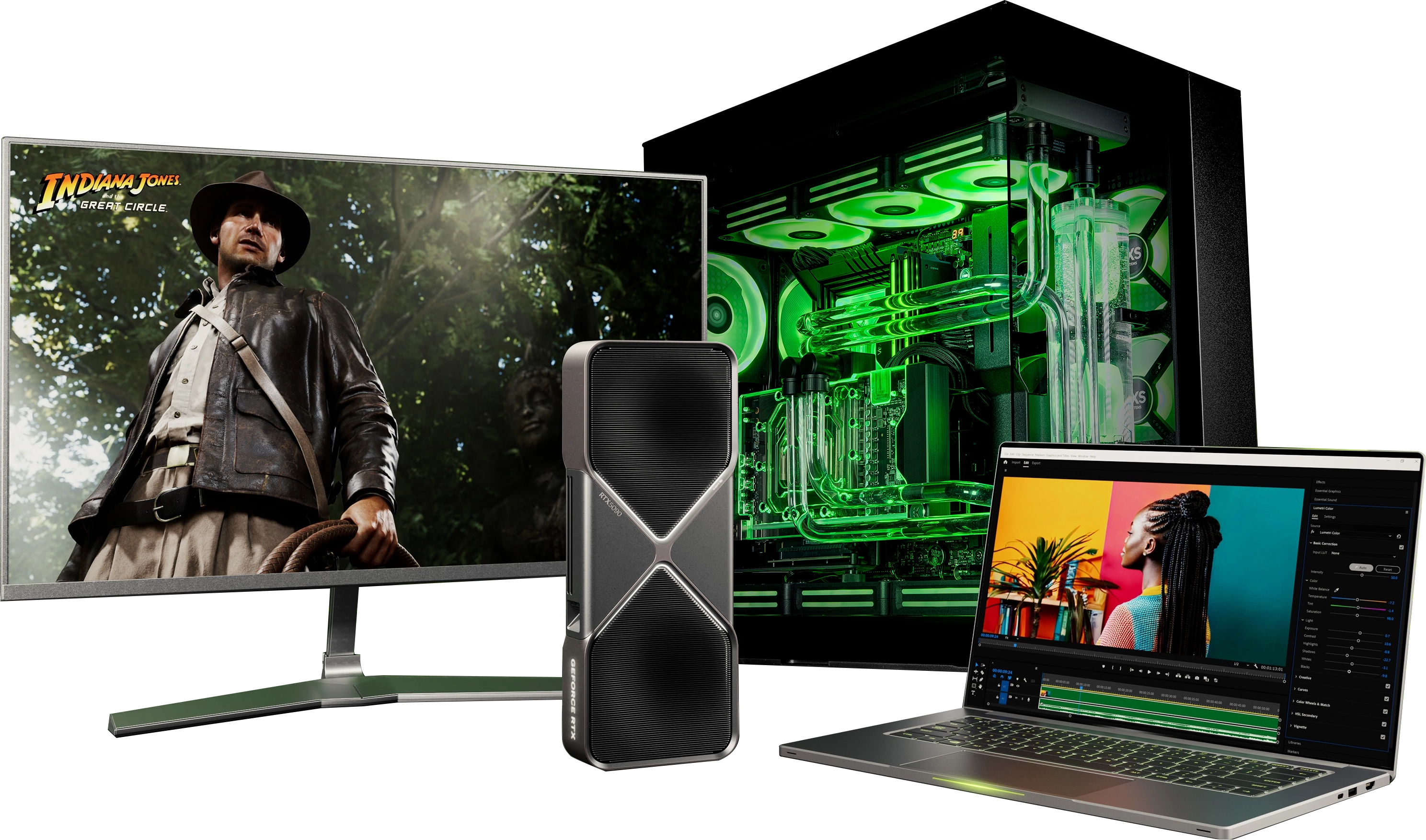
Ready to buy?
NVIDIA GeForce graphics cards can be purchased as a standalone product or integrated into a gaming PC from our award-winning 3XS Systems team.
Frequently Asked Questions
The graphics card is the most important component in a gaming or content creation PC as its responsible for rendering games and applications. More powerful, and more expensive, graphics cards enable you to play and work at higher resolutions as well as producing higher frame rates, improving user experience.
A graphics card comprises two main components, the GPU (Graphics Processing Unit), effectively the brain of the card plus VRAM (Video Random Access Memory) which the GPU uses to store data such as models, textures as well as buffering rendered frames.
A CUDA (Compute Unified Device Architecture) core is the primary processor inside NVIDIA GeForce GPUs responsible for rendering graphics and other tasks. Each GPUs has thousands of CUDA cores working together in parallel; the more cores, the higher the performance. Some tasks are accelerated by specialist RT or Tensor cores, see the separate entry in this FAQ for further detail on these types of core.
You can see how advanced a CUDA core is by the name of the architecture, to name some recent examples Blackwell (2025), Ada Lovelace (2022) and Ampere (2020).
RT (Ray Tracing) cores work alongside CUDA cores inside NVIDIA GeForce GPUs to accelerate ray traced effects in games and applications. Unlike traditional rasterised graphics, ray tracing simulates how light beams and shadows actually work, providing far more rich and realistic graphics. The more RT cores, the faster the framerate when ray tracing is enabled.
You can see how advanced the RT cores are in a GPU by its generation, i.e. 5th gen is more advanced than 4th gen etc.
Tensor cores work alongside CUDA cores inside NVIDIA GeForce GPUs to accelerate AI workloads in games and applications. The more Tensor cores, the faster the AI performance will be.
You can see how advanced the Tensor cores are in a GPU by its generation, i.e. 5th gen is more advanced than 4th gen etc.
DLSS (Deep Learning Super Sampling) is an advanced AI-powered rendering technique unique to NVIDIA graphics cards that uses the Tensor cores to increase frame rates. DLSS enables you ramp up the resolution to enjoy higher quality graphics, without sacrificing performance.
A FLOP (Floating-Point Operation per Second) is a measure of how quickly GPUs calculate the complex floating-point maths behind complex calculations such as simulations and training AI models. The more FLOPS, the faster the performance.
Depending on the software, floating point calculations can be calculated to as great or little precision as required. This is commonly shorted to FPx where x is a number typically in the range of 4 to 64. See the separate entry in this FAQ for further detail.
Like other metrics in computer science such as KB, MB, GB and TB when it comes to RAM or storage, the number of FLOPS is commonly shortened to GFLOPS (giga, 10 to the power of 9), TFLOPS (tera, 10 to the power of 12) and PFLOPS (peta, 10 to the power of 15).
These are a shortened representation of how precisely a floating-point calculation is performed. The most common levels are in order of increasing precision:
| FP4 (1/8th precision) | FP8 (quarter precision) | FP16 (half-precision) | FP32 (single-precision) | FP64 (double precision) | |
|---|---|---|---|---|---|
| PRECISION |
chevron_left Least
Most chevron_right
|
||||
| PERFORMANCE |
chevron_left Fastest
Slowest chevron_right
|
||||
A TOP (Trillion Operations per Second) is a measure of how quickly a GPU can perform the integer maths that is commonly used when inferencing AI models. The more TOPS, the faster the performance.
